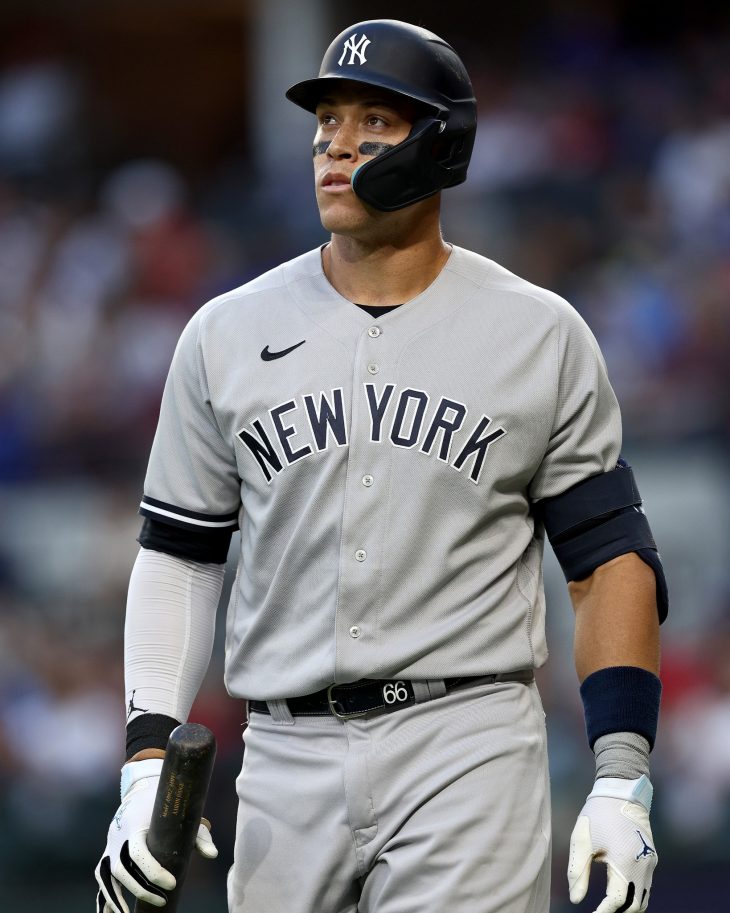Intentionally Walking Aaron Judge: A Baseball Manager's Dilemma

Table of Contents
The Statistical Case for and Against Intentionally Walking Judge
Aaron Judge’s batting prowess is undeniable. His incredible power, consistently high slugging percentage (SLG), and on-base percentage (OBP) make him a constant threat. But should a manager automatically choose to intentionally walk him to avoid a potential home run? The decision hinges on a careful analysis of the numbers.
- Judge's OBP and SLG: A high OBP suggests Judge gets on base frequently, even without homers. A high SLG shows his ability to hit for extra bases. A manager must weigh the probability of a walk versus the probability of a home run, double, or single.
- Advanced Analytics: Advanced metrics like Weighted On-Base Average (wOBA) and Weighted Runs Created Plus (wRC+) provide a more comprehensive picture of a hitter's offensive value. These analytics can help quantify the risk of letting Judge bat versus the potential reward of preventing a home run. A high wOBA and wRC+ strongly suggest that intentionally walking Judge might be the statistically sounder play.
- Probability Calculations: Sophisticated statistical models can estimate the probability of different outcomes given the pitcher, batter, and game situation. These models can help managers make data-driven decisions about whether to intentionally walk Judge.
- Visualizing the Data: Charts comparing Judge's performance against different pitching styles, alongside his historical success rate against specific pitchers, can be used to strengthen the case for or against an intentional walk.
The Contextual Factors Influencing the Decision
The decision to intentionally walk Aaron Judge isn't solely based on statistics; context is crucial. Several factors significantly influence a manager's choice:
- Game Situation: A close game in the late innings demands a more conservative approach, increasing the likelihood of an intentional walk. Conversely, a blowout game might make the risk worthwhile. Runners on base drastically alter the calculation as well.
- Pitching Matchup: If the pitcher on the mound struggles against right-handed power hitters (like Judge), the intentional walk becomes a more appealing option. A pitcher with a strong history against Judge might warrant a different strategy.
- Batting Order Protection: The presence of other dangerous hitters behind Judge in the batting order ("protection") dramatically increases the risk of not intentionally walking him. Facing a potentially more dangerous hitter later in the inning could outweigh the risk of giving up a base.
- Managerial Philosophy: Some managers are more risk-averse than others. This personal approach heavily influences their decision-making process. A high-risk, high-reward manager might choose differently than a cautious one.
The Psychological Impact on Judge and the Team
The decision to intentionally walk Judge isn't merely a statistical exercise; it has significant psychological implications.
- Impact on Judge's Confidence: While some argue it shows respect, repeatedly intentionally walking Judge could potentially deflate his confidence. However, it could also fuel his determination to perform even better in subsequent at-bats.
- Team Morale: Intentionally walking a star player can be perceived as a sign of weakness, potentially affecting the team's morale. The other players may see it as a lack of faith in their ability to get Judge out.
- The Psychology of Pitching to Judge: The alternative – pitching carefully to Judge, focusing on hitting the corners – is a high-risk, high-reward strategy. It requires excellent command and precision from the pitcher.
Historical Precedents and Famous Intentional Walks
Baseball history is filled with examples of intentional walks, some successful, some disastrous. Examining these instances provides valuable insight into the complexities of the decision.
- Successful Intentional Walks: Cases where intentionally walking a powerful hitter prevented a crucial run or changed the momentum of the game highlight the benefits of this tactic.
- Failed Intentional Walks: Conversely, instances where the strategy backfired, leading to subsequent runs, underscore the risks involved. Analyzing these cases can illuminate the factors that contribute to success or failure. Examples of both successful and failed intentional walks against players similar to Judge (like Babe Ruth or other powerful sluggers) can inform this discussion.
Conclusion: The Ever-Evolving Dilemma of Intentionally Walking Aaron Judge
The decision of whether to intentionally walk Aaron Judge remains a complex and multifaceted challenge for baseball managers. It requires a careful balance between statistical analysis, contextual considerations, and understanding the psychological impacts on both the players and the teams. While advanced analytics offer valuable insights, the ultimate decision often relies on a manager's gut feeling and experience combined with the specifics of the game situation.
So, what do you think? When is it strategically correct to intentionally walk Aaron Judge? Share your thoughts and insights in the comments below! Let's discuss the ever-evolving strategy surrounding this baseball dilemma.

Featured Posts
-
 24 Hours Of Le Mans A Special Start With Roger Federer
May 14, 2025
24 Hours Of Le Mans A Special Start With Roger Federer
May 14, 2025 -
 Important Safety Information Walmart Recalls Ride On Toys And Phone Chargers
May 14, 2025
Important Safety Information Walmart Recalls Ride On Toys And Phone Chargers
May 14, 2025 -
 Suits La Episode 5 Reveals Harvey And Mikes Successors
May 14, 2025
Suits La Episode 5 Reveals Harvey And Mikes Successors
May 14, 2025 -
 Sacramento Countys Judge Awoniyi A Landmark Appointment
May 14, 2025
Sacramento Countys Judge Awoniyi A Landmark Appointment
May 14, 2025 -
 Captain America Brave New World Disney Premiere Date Confirmed
May 14, 2025
Captain America Brave New World Disney Premiere Date Confirmed
May 14, 2025
